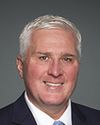Mr. Allison, I want to go back to something you said. You said that 33 million Canadians who had their mobility data collected had an opportunity to consent by this. I just want to make this clear. The 33-million figure is the number of cellphones that exist in this country, so you're telling me that 33 million Canadians actually consented to having their data collected in the manner in which they did.
Evidence of meeting #4 for Access to Information, Privacy and Ethics in the 44th Parliament, 1st Session. (The original version is on Parliament’s site, as are the minutes.) The winning word was information.
A video is available from Parliament.




